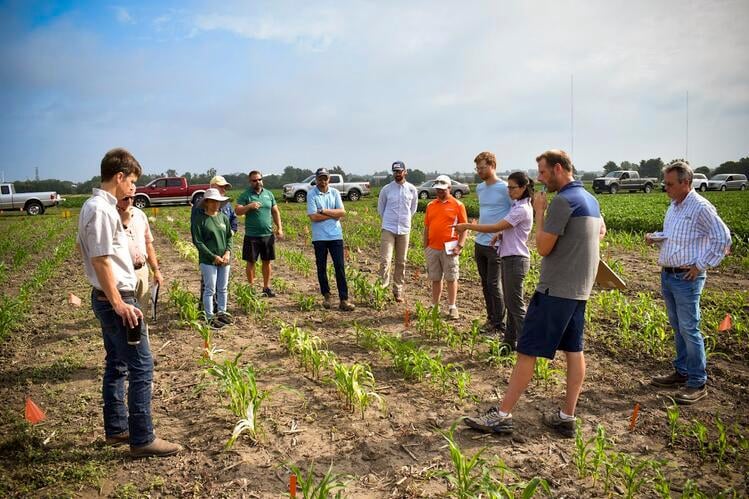New genetic vulnerability to herbicide found in nearly 50 sweet and field corn lines

When a sweet corn breeder in 2021 reported severe injury from the herbicide tolpyralate, Marty Williams hoped it was a fluke isolated to a single inbred line.
Read Also

Devolder Farms receives multiple honours after 37 years of growth
Devolder Farms in Dover Centre is still going strong after 37 years in the community. Started by Bob and Diane…
Two years later, after methodical field, greenhouse and genetic testing, his study confirms sensitivity to tolpyralate in 49 sweet corn and field corn lines and also reveals a new genetic vulnerability that may affect corn more generally.
Tolpyralate is a relatively new HPPD-inhibiting herbicide labeled for all types of corn. Typically, corn detoxifies HPPD-inhibitors, before they can cause injury, through expression of the Nsf1 gene.
Corn lines with mutant nsf1 alleles can show sensitivity to HPPD-inhibitors, but that wasn’t the case with tolpyralate in the lines tested by Williams, an ecologist with USDA’s Agricultural Research Service and affiliate professor in the crop sciences department at the University of Illinois.
Instead, his study showed tolypyralate sensitivity is related to a different gene entirely, explaining why sensitivity was neither expected nor caught during the breeding process.
The original sweet corn line from 2021 had been screened with nicosulfuron, showing no injury and indicating the Nsf1 gene was doing its job. Expecting the same result with tolpyralate was reasonable, since no one had reported major crop injury from the new herbicide.
So, when tolpyralate injury reared its head, the breeder was baffled.
The unusual case led Williams’ team to start hunting for bleached-white corn — the telltale sign of HPPD-inhibitor injury — around the U of I farms.
They didn’t have to hunt long.
Here and there, among strapping green corn rows, were stunted, white stragglers. The team contacted the researchers running trials around the farms to find out what had been sprayed. Tolpyralate, every time.
Faced with a phenomenon that looked less and less like a fluke, Williams’ crew embarked on field and greenhouse trials to determine how widespread tolpyralate sensitivity was. Having easy access to a sweet corn diversity panel, they focused mostly on that group. But they also tested a narrow panel of field corn genotypes.
From the modest screening, the team documented 49 sweet corn and field corn inbreds that suffered moderate to severe injury from tolpyralate. The source of the sugary enhancer gene in sweet corn, a parent line for many sweet corn hybrids, was among the most sensitive genotypes, suggesting sensitivity could be even more widespread.
Injury was far worse with the addition of atrazine and herbicide adjuvants commonly co-applied with HPPD-inhibitors.
“When we applied pure tolpyralate to the sensitive sweet corn inbred, the crop looked fine,” Williams said. “But when we added adjuvants recommended by the herbicide label — crop oil or methylated seed oil —we got a severe bleaching response. And when we also included atrazine, which is common with HPPD-inhibitors, plant mortality was rapid.”
Williams said it’s not feasible to remove adjuvants from the tank. They improve herbicide uptake by weeds and are essential for successful weed control.
“Tolpyralate has agronomic advantages, but obviously it will have limited utility if it harms the crop,” Williams said.
With mounting evidence suggesting nsf1 wasn’t to blame for tolpyralate sensitivity, the team mapped the genome to find the culprit.
Using the original sensitive sweet corn line to map the trait, the team narrowed it down to the region on chromosome five near Nsf1. But Williams said the physiological mechanism remains elusive.
More research is needed to get to the bottom of tolpyralate sensitivity and how widespread the trait might be in all types of corn. Williams said there’s potential to develop molecular markers that can identify sensitive corn lines, which would be useful in improving tolerance to tolpyralate.
For now, he wants to raise awareness among corn breeders, growers and chemical companies that are working on the next generation of HPPD-inhibitors, especially since this is the first incidence of a genetic vulnerability to a corn herbicide documented in over three decades.
Source: Farmtario.com

